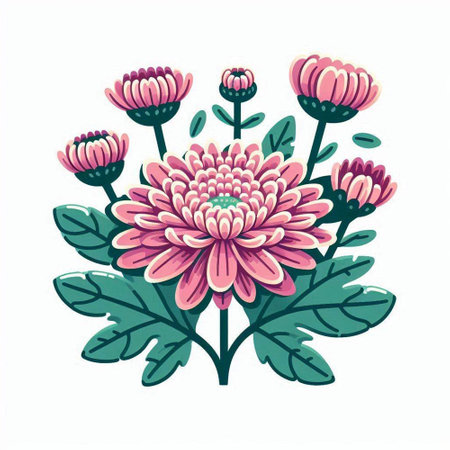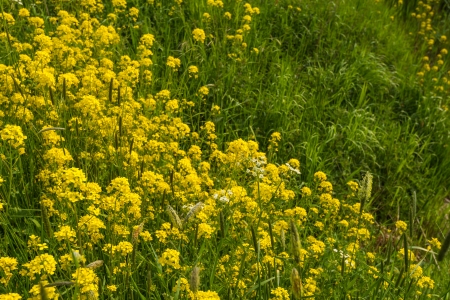Introduction to British Wildflower Meadows
British wildflower meadows are a cherished part of the UK’s natural heritage, evoking images of rolling fields dotted with colourful blooms and buzzing with life. Traditionally found in rural landscapes, these meadows have been shaped by centuries of low-intensity farming practices and seasonal grazing. Today, they are rare treasures, celebrated for their timeless beauty and vital role in supporting local wildlife. Wildflower meadows provide essential habitats for native bees, butterflies, birds, and small mammals, making them crucial for biodiversity. Their delicate balance of grasses and flowers is not only visually enchanting but also deeply woven into Britain’s cultural landscape. For urban gardeners, recreating a slice of this traditional charm offers a way to connect with nature, support pollinators, and bring a piece of countryside magic into the heart of the city.
Choosing Native Wildflowers for Urban Spaces
Creating a wildflower meadow in a small urban garden begins with selecting the right native species. Choosing flowers that are well-adapted to the UK’s climate ensures your meadow will thrive with minimal fuss. Many native British wildflowers are both beautiful and resilient, making them ideal for city gardens where space and time may be limited.
Popular Easy-to-Grow Native Wildflowers
Here is a simple guide to some of the most popular and easy-to-grow native British wildflowers, perfect for small urban plots:
| Wildflower | Flowering Season | Height (cm) | Key Benefits |
|---|---|---|---|
| Cornflower (Centaurea cyanus) | June – August | 40–90 | Bright blue flowers, attracts bees and butterflies |
| Oxeye Daisy (Leucanthemum vulgare) | May – September | 30–60 | Tolerates poor soils, cheerful white blooms |
| Red Campion (Silene dioica) | April – October | 30–90 | Long flowering period, supports pollinators |
| Ladies’ Bedstraw (Galium verum) | June – September | 30–60 | Scented yellow flowers, good ground cover |
| Meadow Buttercup (Ranunculus acris) | April – August | 30–90 | Tolerates damp conditions, classic meadow look |
Tips for Selecting Species
- Select a mix of annuals and perennials for continuous colour.
- Aim for flowers with varying heights to create layers and interest.
- Choose species that naturally grow in your local region for best results.
The Importance of Native Flowers in Urban Gardens
Native wildflowers not only enhance the beauty of small city gardens but also support local wildlife such as bees, butterflies, and birds. They require less water and fertiliser than non-native plants, making them an environmentally friendly choice. By selecting species suited to British weather—resilient to rain, occasional drought, and cooler temperatures—you ensure your urban meadow remains vibrant year after year.

3. Preparing Your Urban Garden for a Meadow
Transforming even the smallest urban space into a flourishing British wildflower meadow is entirely possible with some practical planning. Whether you have a tiny back garden, a balcony, or just a few containers, thoughtful preparation will help your mini-meadow thrive.
Spot Selection
Start by choosing the right spot. Wildflowers need plenty of sunlight, so pick an area that receives at least six hours of direct sun each day. If youre working with containers or window boxes, make sure they can be easily moved to catch the sun as it shifts through the seasons.
Soil Preparation
Wildflowers actually prefer poor soil, which discourages vigorous grasses and helps native blooms flourish. Remove any turf or existing plants from your chosen patch. Loosen the soil to about 15cm deep and remove weeds, stones, and roots. If your soil is rich, consider mixing in a little sand or grit to reduce fertility.
Containers and Raised Beds
If using pots or raised beds, fill them with low-nutrient compost or a blend of garden soil and coarse sand. Ensure good drainage by adding gravel at the bottom—wildflowers dislike soggy roots.
Final Touches Before Sowing
Rake the soil surface level and let it settle for a week or two before sowing your seeds. This pause allows weed seeds to germinate—remove these young weeds by hand for a cleaner start. With your space now prepped, you’re ready to sow and watch your own slice of British meadow come to life.
4. Sowing and Maintenance Tips
Creating a wildflower meadow in a small urban garden is both rewarding and manageable, especially with the right approach to sowing and upkeep. Here’s some straightforward, seasonal advice tailored for busy city dwellers who want to bring a touch of British countryside charm to their outdoor space.
Sowing Seeds: Getting Started
Timing is key. The best months for sowing wildflower seeds in the UK are March-April or September-October. Choose a spot with plenty of sunlight, remove existing grass and weeds, then lightly rake the soil. Scatter the seeds evenly and gently press them into the soil—there’s no need to bury them deeply.
Simple Sowing Steps
| Step | Tip |
|---|---|
| Clear Area | Remove grass/weeds for better seed contact |
| Rake Soil | Create a fine, crumbly surface |
| Scatter Seeds | Even coverage, use a mix of annuals & perennials |
| Tamp Down | Press seeds in with hands or flat board |
Encouraging Growth
After sowing, keep the area moist until seedlings appear (usually 2-4 weeks). In dry periods, water lightly but avoid over-watering. Most British wildflowers thrive on poor soils, so don’t add fertiliser. If you spot weeds popping up early on, gently pull them out by hand.
Seasonal Maintenance Table
| Season | Main Task |
|---|---|
| Spring | Sow new seeds; remove emerging weeds |
| Summer | Enjoy flowers; minimal watering during droughts |
| Autumn | Mow or cut back after flowering; reseed bare patches if needed |
| Winter | Leave seed heads for wildlife; tidy edges if desired |
Basic Upkeep for City Gardens
If you’re short on time, let nature do much of the work. Wildflower meadows need less mowing than lawns—just one main cut in late summer or autumn will suffice. Remove clippings to prevent nutrient build-up and encourage future blooms. Resist the urge to tidy too much; leaving some stems and seed heads will support local birds and insects through winter.
5. Supporting Local Wildlife
Even the smallest British wildflower meadows can become a haven for local wildlife, bringing your urban garden to life with bees, butterflies, and birds. These creatures play an important role in pollination and natural pest control, helping your garden thrive. To attract them, choose a variety of native wildflowers such as cornflowers, poppies, and oxeye daisies—these provide nectar across the seasons. Avoid using pesticides or chemical fertilisers, as these can harm beneficial insects. Providing small logs or stones creates sheltered spots for insects and ground-dwelling wildlife. You can also add a shallow bird bath or a simple water dish to support thirsty pollinators and birds. By creating pockets of wild habitat and leaving some areas slightly untidy, you’ll offer food and shelter that encourage more wildlife visitors. Making these thoughtful choices not only supports local biodiversity but also fills your garden with movement and song.
6. Aesthetic Ideas and Inspiration
Visual Suggestions for Small Urban Spaces
Transforming a small urban garden into a British wildflower meadow is not only about plant choice, but also about how you arrange your space. To evoke the charm of traditional British meadows within a compact area, consider layering heights and colours thoughtfully. Place taller species like oxeye daisies and wild carrot towards the back or centre, allowing lower-growing varieties such as self-heal and clover to spill to the edges. This creates an organic, flowing look reminiscent of countryside meadows while maximising every inch of your city plot.
Referencing British Landscape Traditions
Draw inspiration from classic British landscapes by echoing their informal structure. Avoid rigid lines and geometric patterns; instead, embrace gentle curves and irregular groupings. Use winding pathways made from gravel or reclaimed brick to meander through swathes of wildflowers. Adding a rustic wooden bench or vintage metal seat tucked among the blooms invites quiet reflection—just as you might find in an English country garden.
Blending with Contemporary Urban Style
Balance tradition with modern urban aesthetics by introducing sleek containers or raised beds for your wildflowers, ideal if your space is paved or has limited soil. Group clusters of native blooms in minimalist planters to create bold pops of colour against urban materials like concrete or slate. Consider integrating artful features such as corten steel edging, contemporary water bowls, or simple vertical trellises for climbing wildflowers like sweet peas.
Colour Palettes and Seasonal Interest
Choose a palette inspired by British meadows—soft blues, purples, yellows, and whites—for a calming effect, or introduce bursts of red poppy for drama. Plan for staggered flowering times so that your garden offers visual interest from spring through autumn, keeping pollinators happy and your outdoor space lively throughout the seasons.
Finishing Touches
Add finishing touches that reflect both British heritage and modern tastes: recycled stepping stones, bee hotels crafted from natural materials, or hand-thrown pottery bird baths. These subtle details tie together the natural beauty of wildflowers with thoughtful design, making even the smallest urban garden feel both stylish and distinctly British.


